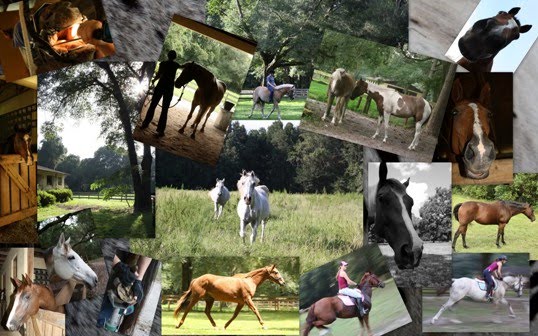Wow, I haven't blogged in forever! I thought I'd give a little overview of how GP management rolls -- how we decide why we do what we do.
As the primary caretaker of your horses, it's my personal goal to provide the absolute best care possible. But with so many different opinions and techniques, how do we decide what's really "best?" I think the answer to that is both simple and complex. The simple answer is, "Whatever works best for that individual horse." And the complex answer is, "Well, it all depends." There are so many variables to account for when developing the equation to create the ultimate solution. My husband, John, is a biostatistician and he's good at reminding me how to incorporate and weigh all the necessary variables.
Our decisions here at GP are not as simple as "buy the best hay and the best grain," although I wish they were. But in order to keep your costs relatively low, we try to balance "the best" choices with as many safe compromises as possible. For example, the cost of gas to pick up feed orders once a week is higher than paying the delivery fee for two weeks worth of grain, so we switched to having feed delivered. I would rather buy feed weekly to have the freshest grain, but as long as the grain isn't spoiling then getting two weeks-worth at a time is a good compromise.
Arguably the best diet for horses is a forage-only diet, but this is challenging given our restrictions as a boarding facility. I try to maintain as natural an environment and lifestyle for the horses as possible while keeping them healthy and helping them thrive mentally, emotionally, and physically. This blog post is really meant to be an overview, so I will only touch on a few examples of our protocols.
Herds versus individual turnout:
Horses are naturally social individuals and need to interact with other horses both above and below them in a hierarchy. Some of us humans have a hard time accepting that their horse may be kicked or bitten when in a herd, but this is all part of their natural social structure. I try to create the best herd combinations so that the amount of social stress remains within a healthy range, so if I notice a horse being excessively picked on or just not joining up with the group, I will make a change. I will never offer individual turnout unless an exception has to be made, for example, a very geriatric horse cannot keep himself safe within the current herds and is emotionally accepting of individual turnout.
Feeding hay:
To promote more movement and avoid sedentary behavior, we spread their coastal hay wide and thin around the pasture, rather than leaving it in piles for the horses to plant themselves and indulge for an hour or more. We want them moving and browsing as much as possible.
More to come! Stay tuned...

No comments:
Post a Comment